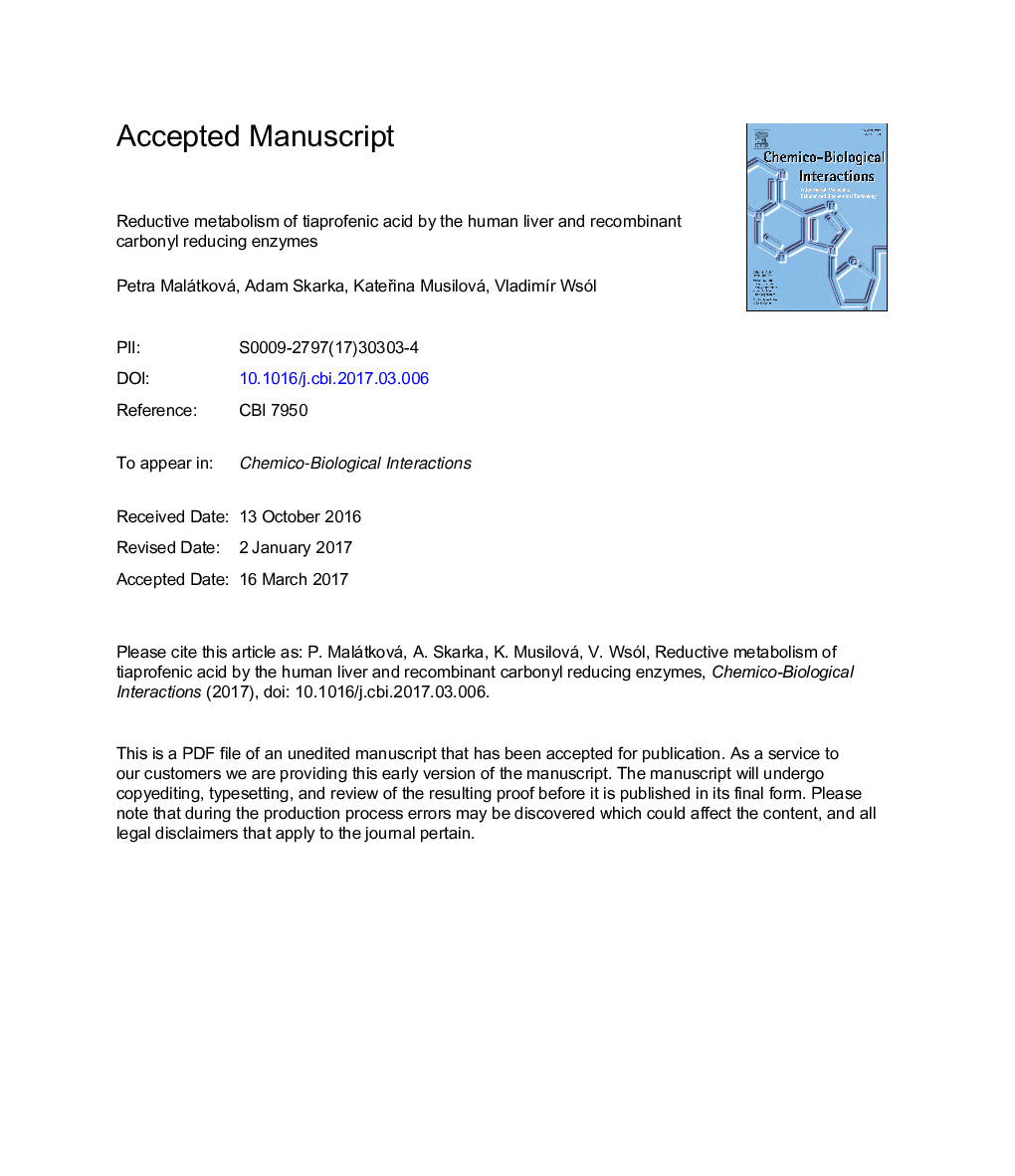| Article ID | Journal | Published Year | Pages | File Type |
|---|---|---|---|---|
| 8545560 | Chemico-Biological Interactions | 2017 | 22 Pages |
Abstract
Tiaprofenic acid is a widely used anti-inflammatory drug; however, the reductive metabolism of tiaprofenic acid is not yet well understood. Here, we compared the reduction of tiaprofenic acid in microsomes and cytosol from the human liver. The microsomes exhibited lower Km value toward tiaprofenic acid than the cytosol (Km = 164 ± 18 μM vs. 569 ± 74 μM, respectively), whereas the cytosol showed higher specific activity during reduction than the microsomes (Vmax = 728 ± 52 pmol mg of proteinâ1 minâ1 vs. 285 ± 11 pmol mg of proteinâ1 minâ1, respectively). Next, a panel of recombinant carbonyl reducing enzymes from AKR and SDR superfamilies has been studied to find the enzymes responsible for the cytosolic reduction of tiaprofenic acid. CBR1 was identified as the reductase of tiaprofenic acid with high specific activity (56,965 ± 6741 pmol mg of proteinâ1 minâ1). Three other enzymes, AKR1A1, AKR1B10, and AKR1C4, were also able to reduce tiaprofenic acid, but with very low activity. Thus, CBR1 was shown to be a tiaprofenic acid reductase in vitro and was also suggested to be the principal tiaprofenic acid reductase in vivo.
Related Topics
Life Sciences
Environmental Science
Health, Toxicology and Mutagenesis
Authors
Petra Malátková, Adam Skarka, KateÅina Musilová, VladimÃr Wsól,
